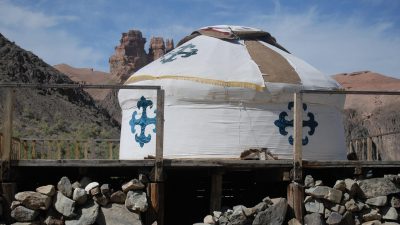Saturia Tornado Wiped Manikganj Off the Map
On 26 April 1989, Bangladesh witnessed an unimaginable catastrophe—the Daulatpur–Saturia Tornado, the deadliest tornado ever recorded in human history. In a matter of minutes, this monster storm unleashed its fury on Manikganj District, leaving a trail of devastation that the nation still remembers.
With over 1,300 fatalities, more than 12,000 people injured, and 80,000 left homeless, the destruction was on a scale never seen before in Bangladesh. This was no ordinary tornado—it was a storm so violent that entire villages vanished, and countless families were erased from existence.
Despite its historic significance, this tornado remains one of the least discussed natural disasters outside Bangladesh. The lack of awareness about this record-breaking catastrophe raises an important question—why was such a horrifying event forgotten by history?
The Deadliest Tornado in History: What Really Happened?
Tornadoes are not uncommon in Bangladesh, yet none have ever caused destruction on this level. On that fateful day, the storm system formed rapidly, and by the time it touched down, it had already grown into an unstoppable force.
The tornado began in Daulatpur, a region in the western part of Manikganj District, and moved northeast towards Saturia, leaving nothing but ruins in its wake.
- Houses were torn from the ground.
- Trees were uprooted and hurled like spears.
- People were lifted off the ground, thrown hundreds of metres away, many never to be found again.
This was not just a storm—it was a natural massacre, wiping out entire communities in seconds. The force of destruction was so intense that even concrete buildings collapsed, and roads became unrecognisable fields of debris.
In a country already vulnerable to natural disasters, this tornado pushed Bangladesh to its limits, exposing the government’s unpreparedness, the fragility of infrastructure, and the lack of emergency response mechanisms.
How Did This Tornado Become So Powerful?
The formation of this tornado was a perfect storm of atmospheric conditions, which created an extremely powerful supercell.
Several factors contributed to its unmatched intensity:
- Extreme Heat and Humidity: April is one of the hottest months in Bangladesh, with high moisture levels in the air. This created unstable atmospheric conditions, perfect for severe thunderstorms.
- Clash of Warm and Cold Air: The warm, moisture-rich winds from the Bay of Bengal collided with cold, dry air moving in from the north. This temperature contrast led to the development of violent updrafts, setting the stage for a tornado.
- Rapid Wind Shear: Wind patterns at different altitudes moved at varying speeds and directions, creating a strong rotational motion in the clouds. This spinning effect intensified the storm, allowing it to grow into a massive tornado.
- No Natural Barriers: The landscape of Manikganj is mostly flat, with no mountains or hills to break up the storm. This allowed the tornado to maintain its strength for a longer time, increasing the destruction.
By the time it touched down, the tornado had already reached F5 intensity, the highest rating on the Fujita scale, meaning it was capable of lifting vehicles, destroying buildings, and wiping out entire villages.
The Shocking Toll: Deaths, Injuries, and Homelessness
The numbers from this disaster were staggering, making it one of the worst tornadoes ever documented:
- ☠️ More than 1,300 People Killed:
- The tornado’s ferocious winds and flying debris caused instant deaths.
- Many were crushed under collapsed buildings.
- Some victims were thrown far away, their bodies never found.
- 🩸 Over 12,000 People Injured:
- Thousands suffered broken bones, head injuries, and deep wounds.
- Many survivors lost limbs due to sharp debris cutting through their bodies.
- The injured overwhelmed hospitals, with doctors struggling to provide care.
- 🏚️ 80,000 People Made Homeless:
- Entire neighbourhoods were erased within minutes.
- Families were forced to live in makeshift shelters for months.
- With no access to food or clean water, disease outbreaks became a major threat.
- 🔍 Missing Persons Crisis:
- The tornado swept people away, making identification impossible.
- Some families were completely wiped out, leaving no one to report them missing.
This level of destruction had never been seen in Bangladesh before. The government was overwhelmed, and international aid was slow to arrive.
The Strength of the Tornado: A Storm of Unbelievable Power
The Daulatpur–Saturia Tornado was an F5 on the Fujita scale, which meant it had wind speeds exceeding 400 km/h.
Its power was evident in how it destroyed everything in its path:
- 🚗 Vehicles Thrown Like Toys: Even heavy trucks were lifted and tossed hundreds of metres away.
- 🌲 Trees Ripped from the Ground: Centuries-old trees were uprooted and stripped of their bark.
- 🏚️ Buildings Flattened: Strongly built homes and even concrete structures were completely destroyed.
This was not just a typical tornado—it was a super tornado, one of the most powerful ever recorded on Earth.
Why Was Bangladesh So Vulnerable to This Disaster?
The impact of this tornado was worsened by several critical factors:
- Weak Housing:
- Most homes in Manikganj were made of bamboo, mud, and tin sheets, offering no protection against an F5 tornado.
- Lack of Early Warning Systems:
- Unlike the United States, Bangladesh had no radar systems in place to detect tornadoes.
- People had no time to take cover—they were caught completely off guard.
- No Tornado Shelters:
- There were no designated safe areas for people to hide in.
- The only option for survival was to run or hide under weak structures, which collapsed instantly.
These failures resulted in one of the worst tornado disasters in human history.
Conclusion: Lessons Still Unlearned?
Even decades later, Bangladesh remains at risk for similar disasters. While early warning systems have slightly improved, many of the same issues remain:
- Poorly built homes
- Lack of public tornado shelters
- Inadequate disaster response
If another F5 tornado were to strike today, would Bangladesh be prepared? Or would history repeat itself?
Final Thoughts: A Disaster That Must Not Be Forgotten
The Daulatpur–Saturia Tornado was a warning to the world about the power of nature and the cost of unpreparedness. Yet, it remains an overlooked tragedy, even though it holds the record for the deadliest tornado in history.
The world cannot afford to forget this disaster, or else similar tragedies will continue to unfold.
FAQs
- What was the wind speed of the tornado?
- It exceeded 400 km/h, making it an F5 tornado, the strongest category.
- Why did so many people die?
- Weak housing, no warning systems, and no shelters contributed to the high death toll.
- How does this tornado compare to others in history?
- It remains the deadliest tornado ever recorded.
- Did the government provide relief?
- Yes, but the response was slow and inadequate.
- Could another tornado like this hit Bangladesh?
Yes, and without better preparation, the results could be just as devastating.




